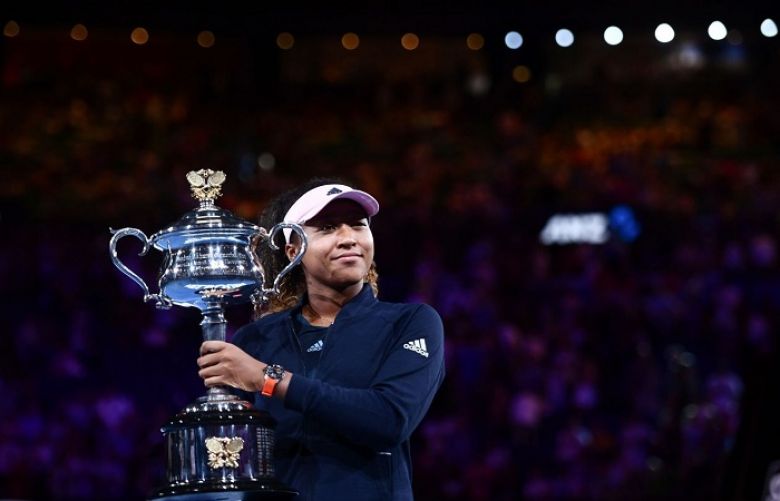After an unlikely stumble, Naomi Osaka regained her confidence and won the Australian Open on Saturday—a performance that will make fans eager for her next Grand Slam stop: the French Open in Paris.
Osaka, 21 years old, beat Petra Kvitova 7-6(2), 5-7, 6-4 in Melbourne with a powerful display of tennis—and a recovery from a nervous spell. She led the second set 5-3 with Kvitova serving at 0-40. But Kvitova, age 28, won five points in a row to hold and proceeded to win the next three games.
Osaka easily could have crumbled after such a stunning failure. Instead, she recomposed herself and didn’t lose her serve again. After her win, Osaka said she was still in disbelief.
“I still feel very shocked,” she said. “I felt like the match wasn’t completely done, but it was done, you know?”
The victory makes Osaka, born in Japan, the No. 1 ranked woman in tennis, a feat that had never been achieved by a man or woman from Asia. She has now won her first two Grand Slam titles in a row. American Jennifer Capriati was the last woman to do that, in 2001. Osaka has now won 60 matches in a row after winning the first set, according to the Women’s Tennis Association.
But the biggest aspect of Osaka’s victory is that it ends a long run of wide-open tennis, in which the eight majors in 2017-18 were each won by a different woman. Now women’s tennis has a young champion who looks, and acts, like she could become the tour’s leading star.
Before the Australian Open final, coach Sascha Bajin spoke about Osaka’s desire—and how hard she has worked—since winning last year’s U.S. Open.
“She really wants it,” Bajin said. “We had an unbelievable great season last year, but after having just two weeks’ break, she came back and showed up and really worked her butt off.”
When Osaka beat Serena Williams in last year’s U.S. Open final, a controversy between Williams and the referee led to loud boos and tears from Osaka, who had played her first Grand Slam final like a veteran rather than a rookie. The Australian Open, thankfully, didn’t involve any disputes for either player.
The match lasted two hours and 27 minutes and had loads of aggressive shots. Kvitova, a lefty, and Osaka both hit 33 winners. Osaka was slightly more consistent: She made 33 errors compared with 39 by Kvitova. Osaka had nine aces and hit her fastest serve at 119 miles an hour. After losing the second set, Osaka walked to the bathroom and regained her composure. She saved one break point in the third set and never looked back.
“In the third set of my match today, I literally just tried to turn off all my feelings,” Osaka said. “So that’s why I wasn’t yelling as much in the third set.”
For Kvitova, the Australian Open was her first Grand Slam final since she won her second Wimbledon title in 2014. In December 2016, a man invaded Kvitova’s home in Prostějov, Czech Republic, and put a knife to her throat. In defending herself, Kvitova suffered deep cuts on her left fingers. She had surgery hours later, but at the time a full recovery looked slim.
Remarkably, Kvitova was back on the court at the French Open in 2017 and won her next tournament, in Birmingham, Britain. She also reached the quarterfinals of the U.S. Open that year.
Kvitova has talked about fighting nerves when Grand Slam tournaments begin, and sometimes failing. At Wimbledon last year, she lost in the first round to an unseeded player. But when Kvitova survives a few early rounds, she typically becomes one of the most dangerous players.
That’s a big reason why this final was so good to watch, and so impressive by Osaka. Both players take little time between serves. Both players try to overwhelm their opponents with booming swings. And despite her age, Osaka is now the best in women’s tennis when it comes to attacking an opponent.
“Definitely she is a great one,” Kvitova said. “We’ll see what the future will bring. But for sure she has probably everything…to be there and play her best tennis.”
The most amazing aspect about Osaka: She could still improve her game a lot.
“We worked on just a little bit more of everything,” Bajin said. “And if a power hitter like that can move like someone who is defensive, yeah, the opponent’s going to have to play really well.”
Unlike Williams, who has won 23 Grand Slam titles, Osaka sometimes shrugs about her mistakes and looks defeated. She lost all three of her matches at the WTA Finals, the last tournament of the 2018 season. In Brisbane, Australia, this month, she lost in straight sets to Lesia Tsurenko, a 29-year-old from Ukraine.
At Grand Slams, though, Osaka transforms, a bit like Williams has done her entire career. If Osaka arrives at the French Open in fine health and form, everyone will be watching her with anticipation. Osaka said that, as usual, she will be competing to win.
“For me, Grand Slams is something you dream about playing as a kid,” she said. “I don’t ever want to waste this opportunity.”







